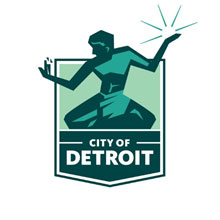| Outcome | Compliant |
6 violations cited :
Code 7-201.11
Poisonous/toxic material(s) not separated from
FULL FOOD CODE:
POISONOUS OR TOXIC MATERIAL shall be stored so they can not contaminate FOOD, EQUIPMENT, UTENSILS, LINENS, AND SINGLE-SERVICE AND SINGLE-USE ARTICLES by: (A) Separating the POISONOUS OR TOXIC MATERIAL by spacing or partitioning; (P) and (B) Locating the POISONOUS OR TOXIC MATERIAL in an area that is not above FOOD, EQUIPMENT, UTENSILS, LINENS, AND SINGLE-SERVICE AND SINGLE-USE ARTICLES. This paragraph does not apply to EQUIPMENT and UTENSIL cleaners and sanitizers that are stored in WAREWASHING areas for availability and convenience if the materials are stored to prevent contamination of FOOD, EQUIPMENT, UTENSILS, LINENS, AND SINGLE-SERVICE and SINGLE-USE ARTICLES. (P)
POISONOUS OR TOXIC MATERIAL shall be stored so they can not contaminate FOOD, EQUIPMENT, UTENSILS, LINENS, AND SINGLE-SERVICE AND SINGLE-USE ARTICLES by: (A) Separating the POISONOUS OR TOXIC MATERIAL by spacing or partitioning; (P) and (B) Locating the POISONOUS OR TOXIC MATERIAL in an area that is not above FOOD, EQUIPMENT, UTENSILS, LINENS, AND SINGLE-SERVICE AND SINGLE-USE ARTICLES. This paragraph does not apply to EQUIPMENT and UTENSIL cleaners and sanitizers that are stored in WAREWASHING areas for availability and convenience if the materials are stored to prevent contamination of FOOD, EQUIPMENT, UTENSILS, LINENS, AND SINGLE-SERVICE and SINGLE-USE ARTICLES. (P)
Priority
Corrected on 4-04-2023
Code 4-302.14
Expand for full food code definition
FULL FOOD CODE:
A test kit or other device that accurately measures the concentration in mg/L of SANITIZING solutions shall be provided. (Pf)
A test kit or other device that accurately measures the concentration in mg/L of SANITIZING solutions shall be provided. (Pf)
Priority Foundation
Corrected on 4-04-2023
Code 4-302.14
Sanitizer test kit not provided
FULL FOOD CODE:
A test kit or other device that accurately measures the concentration in mg/L of SANITIZING solutions shall be provided. (Pf)
A test kit or other device that accurately measures the concentration in mg/L of SANITIZING solutions shall be provided. (Pf)
Priority Foundation
Corrected on 4-04-2023
Code 3-304.12
Dispensing utensil(s) improperly stored
FULL FOOD CODE:
During pauses in FOOD preparation or dispensing, UTENSILS shall be stored: (A) In the FOOD with their handles above the top of the FOOD and the container; (B) In FOOD that is not POTENTIALLY HAZARDOUS with their handles above the top of the FOOD within containers or EQUIPMENT that can be closed, such as bins of sugar, flour, or cinnamon; (C) On a clean portion of the FOOD preparation table or cooking EQUIPMENT (D) In running water, such as dipper well. (E) In a clean, protected location if the UTENSILS, such as ice scoops, are used only with a FOOD that is not POTENTIALLY HAZARDOUS; or (F) In a container of water maintained at a temperature of at least 135° F.
During pauses in FOOD preparation or dispensing, UTENSILS shall be stored: (A) In the FOOD with their handles above the top of the FOOD and the container; (B) In FOOD that is not POTENTIALLY HAZARDOUS with their handles above the top of the FOOD within containers or EQUIPMENT that can be closed, such as bins of sugar, flour, or cinnamon; (C) On a clean portion of the FOOD preparation table or cooking EQUIPMENT (D) In running water, such as dipper well. (E) In a clean, protected location if the UTENSILS, such as ice scoops, are used only with a FOOD that is not POTENTIALLY HAZARDOUS; or (F) In a container of water maintained at a temperature of at least 135° F.
Core
Corrected on 4-04-2023
Code 6-301.14
Handwashing signage not provided
FULL FOOD CODE:
A sign or poster that notifies FOOD EMPLOYEES to wash their hands shall be provided at all HANDWASHING SINKS used by FOOD EMPLOYEES and shall be clearly visible to FOOD EMPLOYEES.
A sign or poster that notifies FOOD EMPLOYEES to wash their hands shall be provided at all HANDWASHING SINKS used by FOOD EMPLOYEES and shall be clearly visible to FOOD EMPLOYEES.
Core
Not corrected
Code 6-202.14
Toilet room(s) not provided with self closing door
FULL FOOD CODE:
Except as otherwise allowed, a toilet room located on the PREMISES shall be completely enclosed and provided with a tight-fitting and self-closing door.
Except as otherwise allowed, a toilet room located on the PREMISES shall be completely enclosed and provided with a tight-fitting and self-closing door.
Core
Not corrected
